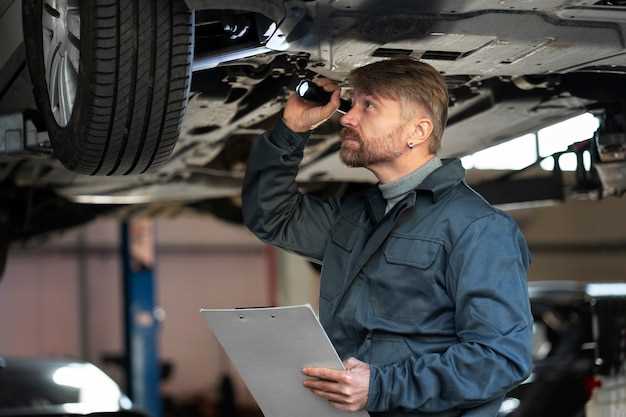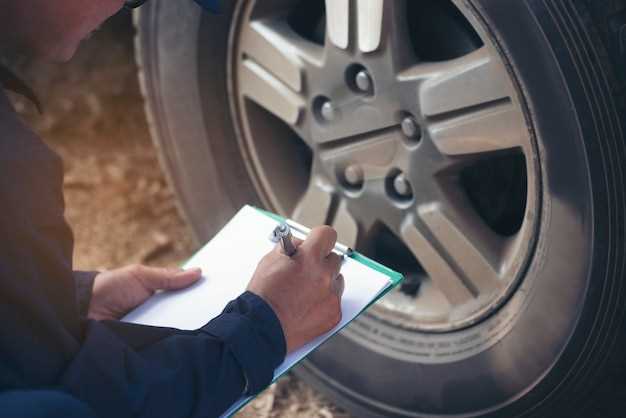
Your vehicle’s suspension system plays a crucial role in ensuring a smooth and safe driving experience. It is designed to absorb shocks and maintain tire contact with the road, allowing for better handling and control. However, over time, various factors can lead to the deterioration of this essential system, resulting in noticeable performance issues.
One of the most common signs that your suspension system requires immediate attention is excessive bouncing while driving. If you notice your vehicle bouncing more than usual over bumps or potholes, it may indicate that the shock absorbers or struts are worn out and unable to perform their intended function. This not only affects comfort but can also compromise your safety on the road.
Another indication of a failing suspension system is uneven tire wear. If you observe that your tires are wearing down more rapidly on one side, it could be a signal that your suspension components are misaligned or damaged. Addressing these issues promptly can help prevent further damage to your vehicle and ensure a smoother ride.
In conclusion, being aware of the signs that your suspension system needs attention can help you maintain the performance and safety of your vehicle. Regular inspections and timely repairs are essential to keep your suspension system functioning optimally and to enhance your overall driving experience.
Identifying a Bouncing Vehicle: Key Symptoms

When it comes to ensuring the safety and performance of your vehicle, the suspension system plays a crucial role. A bouncing vehicle is often a sign that your suspension needs immediate attention. There are several key symptoms you can check to determine if your suspension is compromised.
Excessive Bounce: One of the most noticeable signs is excessive bouncing when driving over bumps or potholes. If your vehicle continues to bounce after hitting a bump, it indicates that the suspension components are unable to absorb the impact properly.
Front-End Dive: Pay attention to how your vehicle responds when you brake. If the front-end dips significantly, this could mean that the shocks or struts are worn out, causing inadequate control and instability.
Uneven Tire Wear: Inspect your tires regularly. Uneven or rapid tire wear may indicate a problem with the suspension. If one or more tires show signs of excessive wear, it is essential to check the suspension system for any underlying issues.
Swerving or Pulling: If your vehicle tends to swerve or pull to one side when driving straight, it can be a sign of a faulty suspension. This issue can impact vehicle handling and overall safety, indicating the need for an inspection.
Noises During Driving: Unusual noises such as clunks, rattles, or knocks while driving may signal that parts of the suspension are damaged or loose. These sounds can indicate issues with the shocks, struts, or other suspension components that require immediate attention.
By being aware of these symptoms and regularly checking your suspension system, you can ensure a smoother and safer ride. If you notice any of these signs, it is crucial to consult a professional mechanic to address the issue promptly.
Performing a Suspension Check: What to Look For
Inspecting your vehicle’s suspension system is crucial for ensuring a smooth ride and maintaining safety on the road. Begin by conducting a bounce test. Push down on each corner of the vehicle with your body weight and release it. Observe how the vehicle reacts. If it bounces multiple times before settling, this may indicate worn shock absorbers or struts that require immediate attention.
Next, visually check for any uneven tire wear patterns. Uneven wear can suggest alignment issues often linked to suspension problems. Ensure the tires are adequately inflated as improper tire pressure can affect suspension performance.
While examining the suspension components, look for any leaking fluid from the shock absorbers or struts. Fluid leakage points to a potential failure that may compromise the suspension’s effectiveness. Additionally, inspect the bushings, joints, and other parts for cracks or damage, as these components play a vital role in stability and comfort.
Finally, listen for noises when driving over bumps or uneven surfaces. Clunking, rattling, or squeaking sounds may signify that parts are loose or failing. Addressing these issues promptly can prevent further damage to the suspension system and enhance overall vehicle safety.
The Consequences of Ignoring Suspension Issues

Neglecting suspension problems can lead to serious safety hazards and vehicle performance issues. One of the most immediate consequences is increased vehicle bounce. A compromised suspension system fails to dampen shocks effectively, leading to excessive bouncing during normal driving. This can significantly reduce control over the vehicle, especially on uneven surfaces.
Additionally, ignoring signs of suspension wear can lead to premature tire wear. When the suspension is not functioning correctly, it causes uneven tire contact with the road. This misalignment increases friction and can shorten the lifespan of your tires, leading to costly replacements and potential blowouts.
Furthermore, a deteriorating suspension can exacerbate existing problems within your vehicle. Ignoring these issues may lead to damage in other systems, such as the steering and brakes. Over time, this multi-faceted damage can result in expensive repairs and further compromise your safety on the road.
Regular checks of your suspension system are essential for vehicle longevity. Early detection of issues can prevent the severe consequences associated with neglect and ensure a smoother, safer driving experience.
